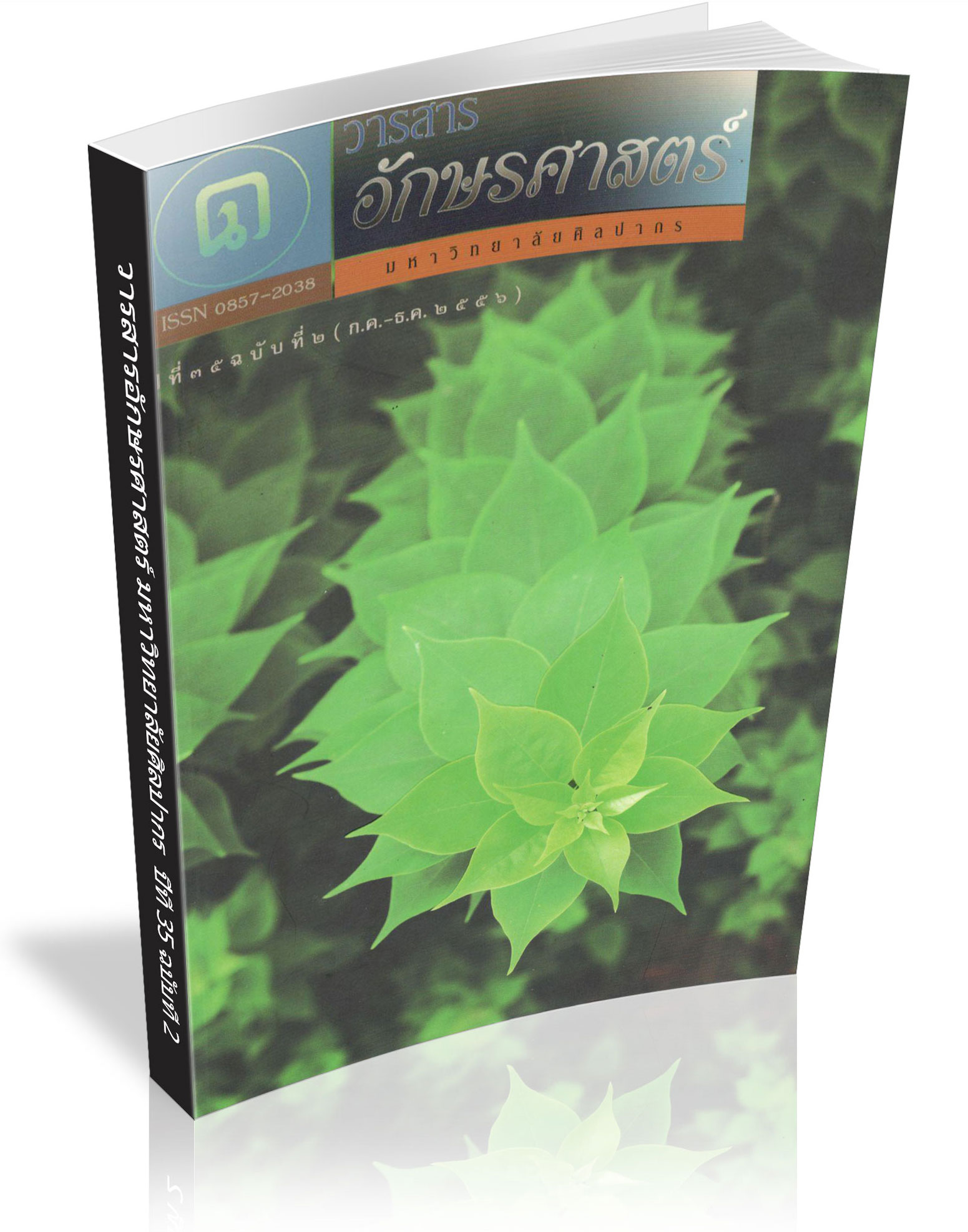Comparative Study of Metaphors used in Thai Translation of Original Korean Literature
Keywords:
Metaphors, Translated Literature, Thai Translation of Original Korean LiteratureAbstract
This article compares the use of metaphors in 'Mother... the missing heart, Please look after mom' written by Kyung-Sook Shin, translated into Thai by Kritini Upayokin, and edited by Anchalee Chaichanawijit with those in the original Korean book named ………….. - ……. (‘Mother... the missing heart, Please look after mom'). This study finds that there are 32 metaphors which may be divided into 5 different characteristics as
follows:
1) metaphors using exactly the same words (so that, the same metaphorical meanings are expressed) are most used, with 21 metaphors or 65.63 percent;
2) metaphors using words in the same terminological scope (which express the same metaphorical meanings) are the second most used, with 4 metaphors or 12.50 percent;
3) metaphors used only in the Thai translated literature, while the original Korean literature uses denotation, with 4 metaphors or 12.50 percent;
4) metaphors used only in the original Korean literature, while the Thai translated literature uses denotation, with 2 metaphors or 6.25 percent; and
5) metaphor using different words which still express the same metaphorical meaning is the least used, with 1 metaphor or 3.12 percent.
These findings reflect, through comparative literature, that the Thais and the Koreans have similar patterns in linking thoughts to the same topics.
Downloads
References
กาญจนา นาคสกุลและคณะ. การใช้ภาษา. พิมพ์ครั้งที่ ๓. กรุงเทพมหานคร : เคล็ดไทย, ๒๕๒๔.
คณะบรรณาธิการ. DONG-A'S PRIME KOREAN-ENGLISH DICTIONARY. โซล : สํานักพิมพ์ดูซันดงอา, ๒๐๐๑.
Lakoff, G, and M. Johnson. Metaphor We Live By. Chicago and Londo : The University of Chicago Press. 1980.
Ullmann, S. Semantics : An Introduction to the Science of Meaning. Oxford: Basil Blackwell, 1970.
Ungerer, F. and H.J. SchmidJ. An Introduction to Cognitive Linguistics. London : Longman, 1996.
แหล่งข้อมูลทางอินเทอร์เน็ต
ความหมายของคําว่า คลื่นมนุษย์ที่ล้นทะลัก. เข้าถึงได้จาก http://dic.daum.net/word/view.
do?wordid=kkw000208323&q=%EC%9D%B8%ED%8C%8C วันที่เข้าถึง ๕ มิถุนายน ๒๕๕๖.
ความหมายของคําว่า จมูกหลุด. เข้าถึงได้จาก http://krdic.naver.com/detail.nhn?docid=
38672000&offset=IDIOM4285#IDIOM4285 วันที่เข้าถึง ๑๑ พฤษภาคม ๒๕๕๖.
ความหมายของคําว่า ตามืด. เข้าถึงได้จาก http://krdic.naver.com/search.nhn?kind=all&
scBtn=true&query=%EA%B9%8C%EB%A7%89%EB%88%88 วันที่เข้าถึง ๕ มิถุนายน ๒๕๕๖.
Downloads
Published
How to Cite
Issue
Section
License
ผู้เขียนบทความต้องยินยอมในข้อกำหนดต่าง ๆ ของวารสารก่อนส่งบทความตีพิมพ์




